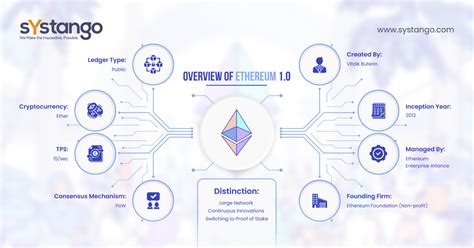Ethereum: Which design method is better? Comparison of the architecture of the Smart agreement
As a newcomer to the world of websites and blockchain technology, there can be an extremely large selection to design your intellectual contracts. Two popular settings that have been paid to great attention in recent years are the design of the event (ED) and the design of the presentation (MP). In this article we will examine both methods and emphasize their strengths and weaknesses in order to make a reasonable decision.
Event (ed.) Design: Decentralized approach
An event based on the event is decentralized based on events based on the creation of events under intellectual contracts. Events are activated when certain conditions are met, e.g. B. a consumer who carries out an action or a processed company.
Advantages:
* Decentralization: With the ED method you can create a more decentralized structure if all nodes (consensus salgorithms) can agree to the status of the blockchain.
* Flexibility
: Events can be caused by different conditions, which makes it easier to create complex logic and an interaction between contracts.
* Master replacement: With several knots, the ED method can achieve greater scaling than conventional centralized architecture.
Disadvantages:
* Complexity: The ED method requires a deeper understanding of the programs on events programming concepts that make it more complicated for new developers.
* Time challenges

: The combination of events can be complex due to the decentralized nature of architecture.
Message transmission (MP) Design: Central approach
The design transmission design is a central approach that depends on the notifications between the creation and distribution of contract. The notifications are sent from one contract to another, so that intellectual contracts with complex logic enable easy implementation.
Advantages:
* simplicity: The MP method facilitates the implementation and understanding of new developers.
* Simple combination: Central design of the design simplifies the orientation due to a clear river of notifications.
* Master replacement: Although the MP design can still achieve considerable standards.
Disadvantages:
* Centralization: The MP method depends on the central government (contract holder), which can lead to centralized control and reduce decentralization.
* Limited flexibility: Centralized architecture may not be able to manage complex interactions between contracts as easily as ED design.
Which design method is better?
After all, the selection of the design approach depends on your specific requirements and goals. If you develop a decentralized program that requires a high degree of scaling and flexibility, you may have a better choice. On the other hand, if you prefer simpler implementation, use a lighter combination and want to donate decentralization to increase scaling. The design of the message transmission (MP) can be the way.
Code Example Solidity:
`Solidarity
Pragma solidity ^0.8.0;
Treaty with myfactory {
// The event is activated when a copy is created
Event “InstancesCreated” (addressdedecopy);
// Function to create a new instance of MyIMPLP
Function CREATISTANCE () Public Return (address) {
// Create a new instance of myimplplplplplplpl
Myimplpl Instances = New Myimpl ();
// Set an instance address by an event -based contract
Post subject instance recreate (address (copy));
Repayment copy. Address;
}
}
`
`Solidarity
Pragma solidity ^0.8.